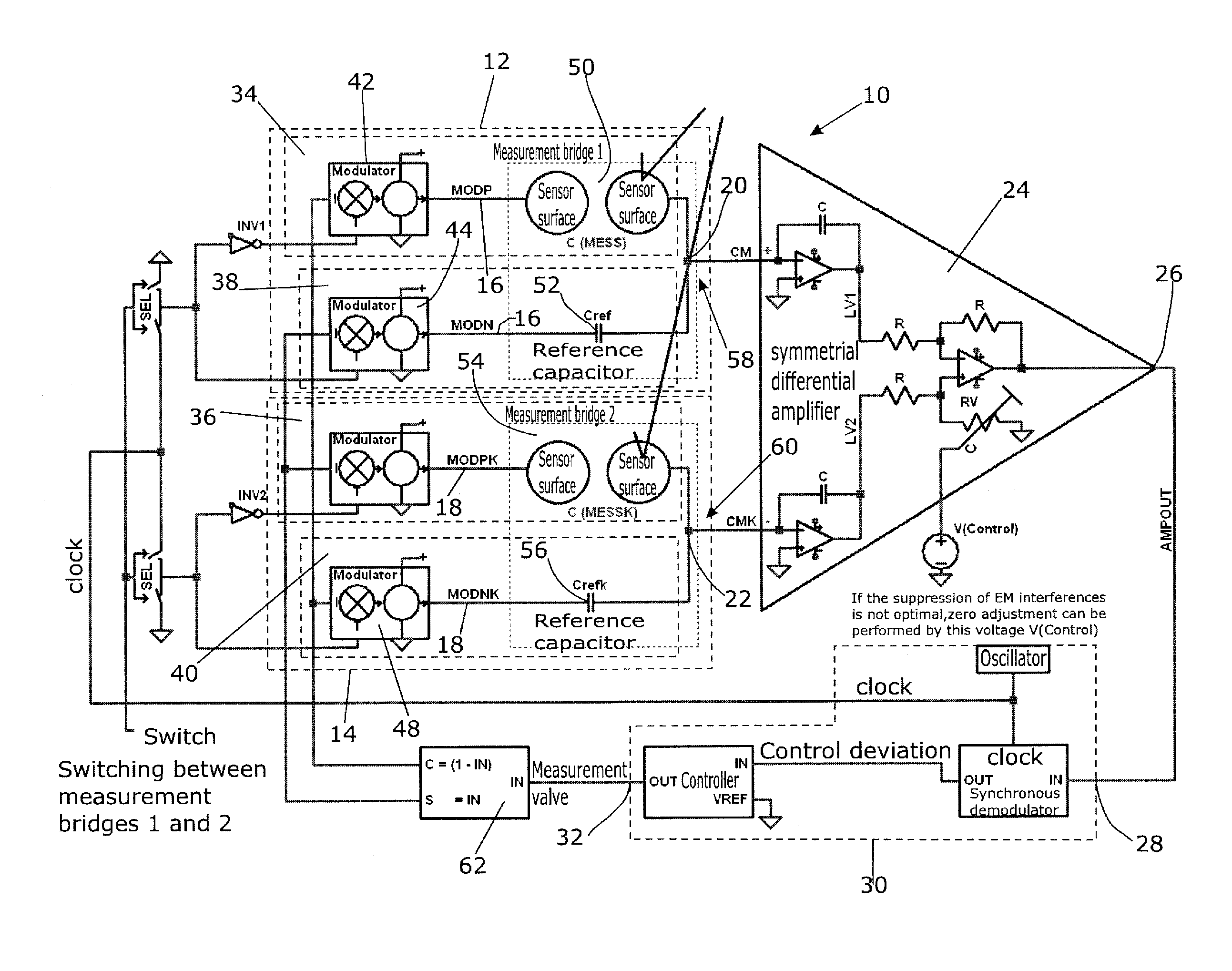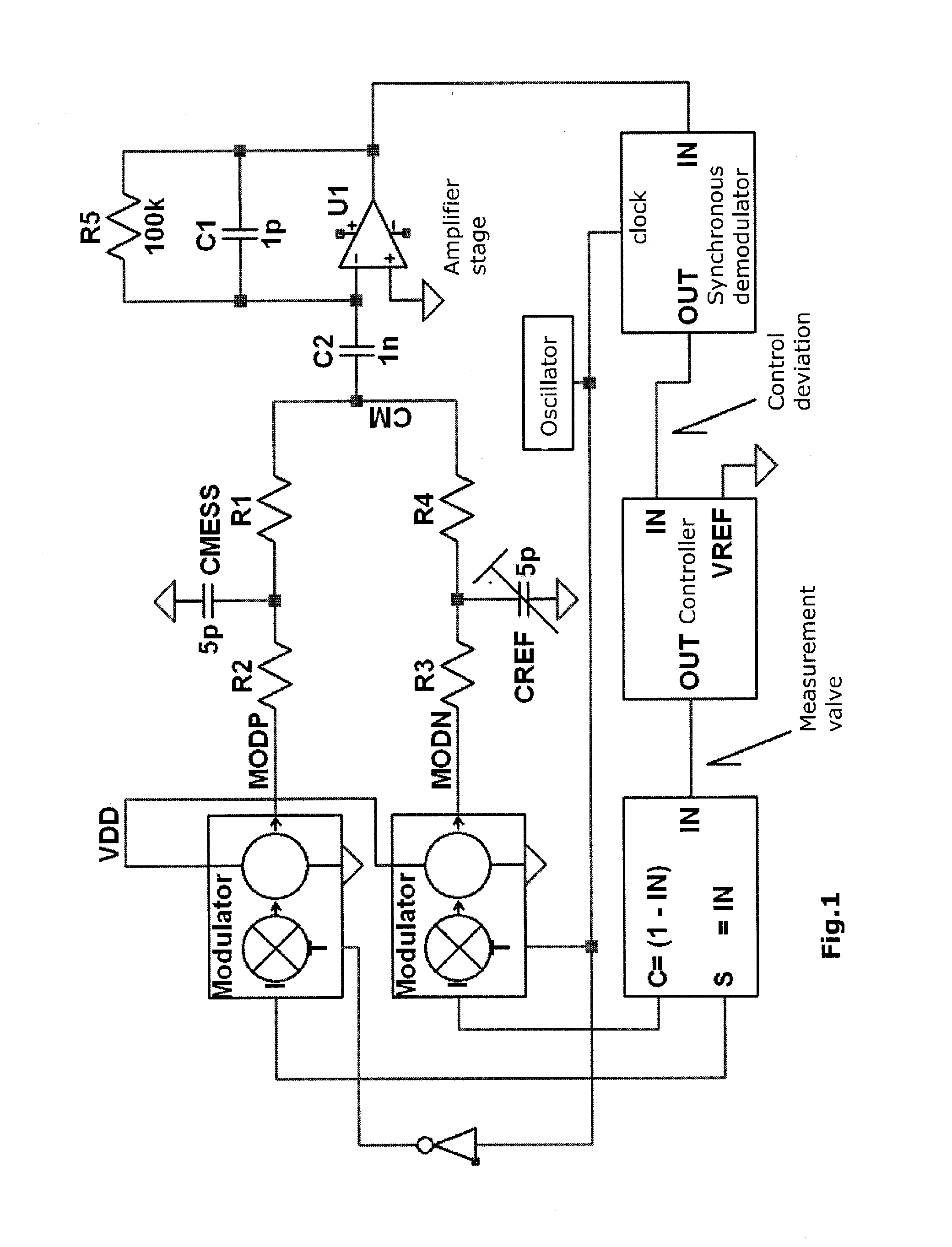Interference-compensated sensor
a sensor and compensation technology, applied in the field of interference compensation sensors, can solve the problem that the signal existent at the amplifier output will normally not be a true zero signal anymor
- Summary
- Abstract
- Description
- Claims
- Application Information
AI Technical Summary
Benefits of technology
Problems solved by technology
Method used
Image
Examples
Embodiment Construction
[0051]The block diagram shown in FIG. 8 represents the layout of the sensor for measurement of electric parameters in a random linear RLC network. What is measured are the changes of the parameters of RLC network elements 50,54 in comparison with the reference RLC network 52,56.
[0052]Now as before, a good EMW demands that the disturbing incident radiation enters the two sensor networks of the sensor (measuring) bridges 12 and 14 to the same extent (symmetrically).
[0053]The control of the two measurement bridges 12 and 14 can be performed simultaneously or sequentially in time. FIG. 8 illustrates the case for simultaneous measurement. In this case, the clock signals of all four modulators are active during measurement. In the general case, when the RLC parameters of the two sensor networks do not fully coincide in their branches 34,38 and 36,40, respectively, a cancellation of the useful signal to zero will occur only at the node AMPOUT 26 and indeed not at the summation points CM 20...
PUM
 Login to View More
Login to View More Abstract
Description
Claims
Application Information
 Login to View More
Login to View More - R&D
- Intellectual Property
- Life Sciences
- Materials
- Tech Scout
- Unparalleled Data Quality
- Higher Quality Content
- 60% Fewer Hallucinations
Browse by: Latest US Patents, China's latest patents, Technical Efficacy Thesaurus, Application Domain, Technology Topic, Popular Technical Reports.
© 2025 PatSnap. All rights reserved.Legal|Privacy policy|Modern Slavery Act Transparency Statement|Sitemap|About US| Contact US: help@patsnap.com



